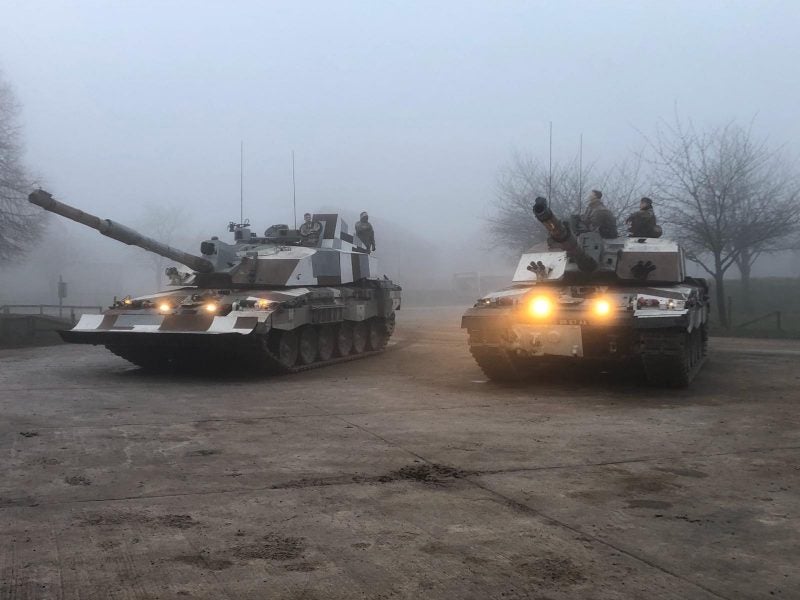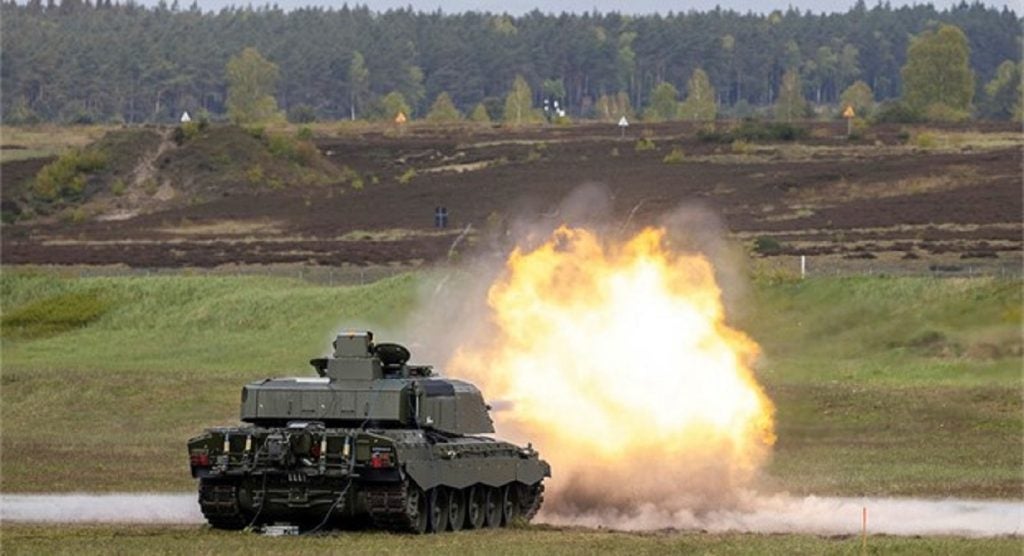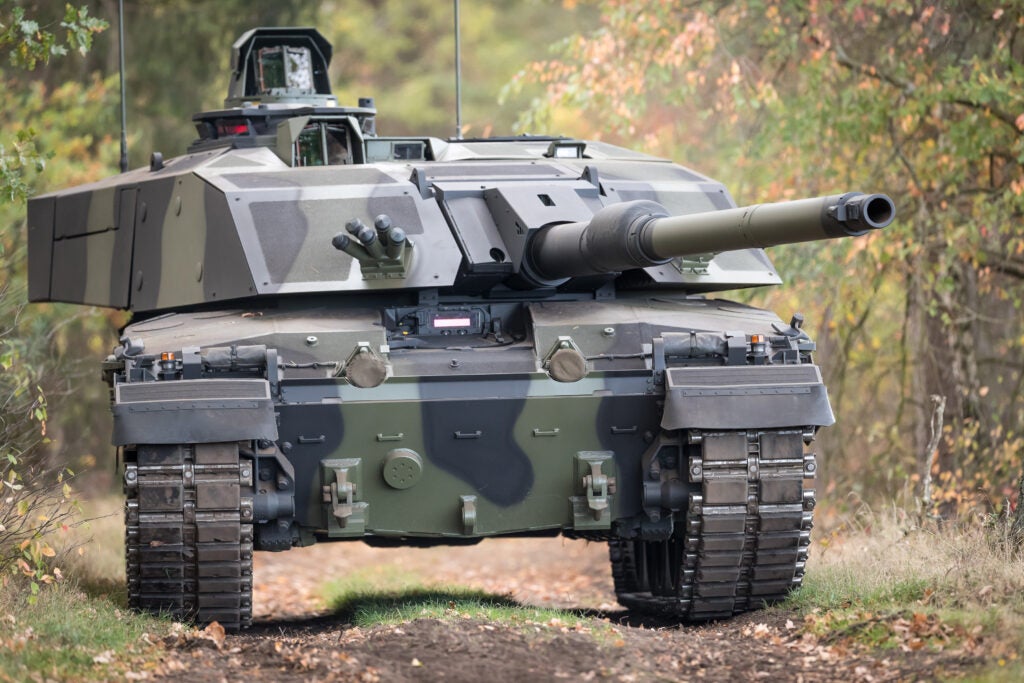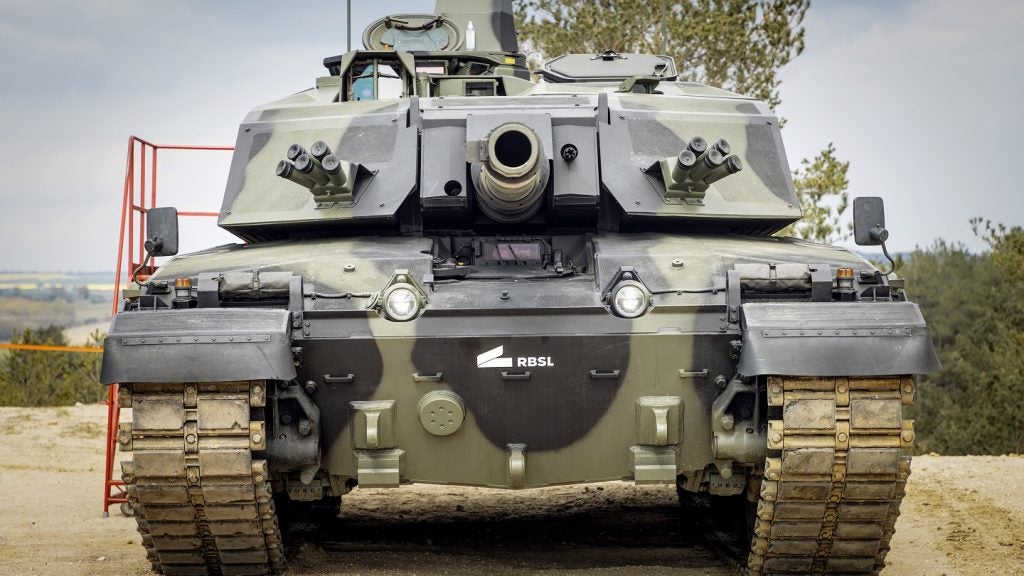
The upgrade, which delivers an urbanised Challenger 2 variant, was developed by the Royal Tank Regiment to meet soldiers’ needs and identifies and fills the capability gap between the British Army’s forces and adversaries in urban combat.
Supported by Army HQ, project Streetfighter II is aimed at adding modifications to the existing Challenger II Main Battle Tank (MBT) to improve lethality, situational awareness and infantry-tank cooperation of ground forces.
The vehicle was recently trialled at the UK’s urban operations facility at Copehill Down Village on Salisbury Plain, where the Streetfighter was put through its paces in an urban combat environment testing a range of upgrades from industry partners.
This year Streetfighter demo built on earlier experience of the project that began in 2018 and saw the upgrades showcased to a range of senior military figures and officials from the Defence Science Technology Laboratory (Dstl).
Lethality upgrades
The Streetfighter II MBT demonstrated by the British Army featured a range of lethality upgrades including heavier, more lethal machine gun systems to provide dismounted infantry better support fire.
The most notable upgrade was one of the two urbanised Challengers being equipped with a Brimstone anti-tank guided missile system designed to neutralise the threat of heavily armoured, highly survivable land platforms at long-range.
How well do you really know your competitors?
Access the most comprehensive Company Profiles on the market, powered by GlobalData. Save hours of research. Gain competitive edge.

Thank you!
Your download email will arrive shortly
Not ready to buy yet? Download a free sample
We are confident about the unique quality of our Company Profiles. However, we want you to make the most beneficial decision for your business, so we offer a free sample that you can download by submitting the below form
By GlobalDataThe Brimstone, made by MBDA, is designed to destroy fast-moving vehicles alongside tanks and other lighter-armoured vehicles as well as fixed positions like bunkers and can be fired from a range of platforms.
Situational awareness
On the situational awareness front, the Streetfighter concept greatly improves the ability of mounted and dismounted personnel to communicate and understand their environment, with communications improved to let personnel on the ground directly communicate with those inside the tank.
The upgraded Challenger features a host of cameras to provide a 360-degree view of the area outside the tank; the original Challenger 2 has a limited field of view and the upgrades mean the commander and gunner can now see everything around them.
The Streetfighter II variant also features a barrel-mounted camera to enable the tank commander and crew to see around corners before they approach them, alerting them and the following personnel in advance of any previously hidden threats.
A major situational awareness upgrade comes in the form of Elbit Systems’ UK’s IronVision platform which uses a heads-up-display (HUD) to provide tank crews with full 360⁰ situational awareness.
The zero-latency system allows the crew to have a full picture of their operating environment despite being under armour by feeding in a picture from outside the tank into the HUD.
Elbit Systems UK CEO Martin Fausset said: “It is great to see Elbit Systems UK supporting the UK Armed Forces as they enhance their battlefield protection systems for urban environments. We relish the opportunity to protect our servicemen and women in the field and are pleased to see the IronVision system delivering in this capacity.”
IronVision pulls together the feeds from the various cameras outside the MBT and then converts them into a single picture where the tank operator only needs to turn their head to see a different view of outside the vehicle, rather than cycle through cameras on a screen.
 Elbit’s IronVision system. Credits Elbit Systems UK.
Elbit’s IronVision system. Credits Elbit Systems UK.
Tank-personnel cooperation
On the slightly more low-tech front, the MBT also supports infantry by physically lightening the load on personnel by carrying extra gear from medical equipment to ammunition, and the addition of a storage rack to carry an urban assault kit.
The improved Challenger 2 is also fitted with steps built into the side of the vehicle allowing personnel to mount and dismount the platform more easily. One of the tanks is also fitted with a plough to clear obstructions from the urban environment allowing personnel to continue moving forward and acting as a makeshift stretcher to transport injured personnel out of the combat environment.
The future of Challenger 2
It is unclear whether the upgrades made by the Royal Tank Regiment will be employed across the wider fleet of Challenger 2 vehicles. However, in the British Army’s wider plans for tanks, the life-extension programme continues to be a priority, in order to continue the service life of the vehicle and maintain the ability of the UK to deploy MBTs into battle.
Current plans for the Challenger 2 life extension programme are slowly drawing to a close after first being tabled in 2013. Any decision on the future of the Challenger 3 will now likely become wrapped up in the planned UK Strategic Defence and Security Review (SDSR) which will look at the needs of the Armed Forces and help guide their future shape.
At Defence IQ’s International Armoured Vehicles 2020, British Army director capability, Major General Jez Bennett reaffirmed the commitment to the vehicle and outlined the scope of the current life extension programme.
Bennet said: “The Challenger 2 programme aims to deliver an enhanced main battle tank, with greater lethality and survivability that will provide precision direct fire and intimate support to the infantry until well into the next decade.”







